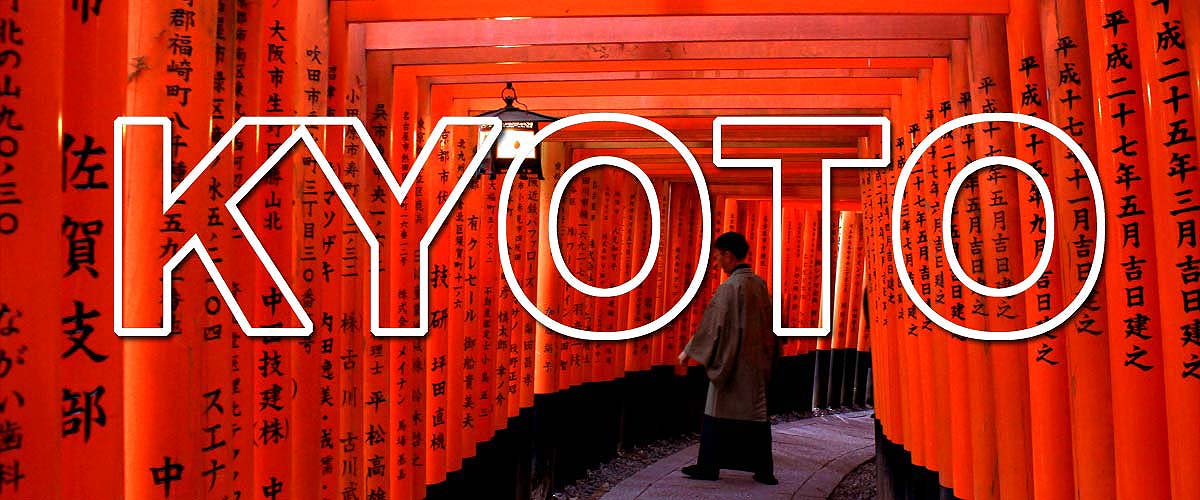
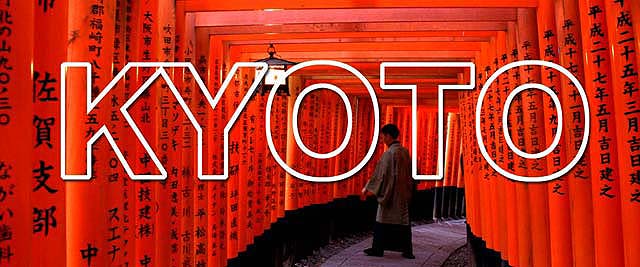
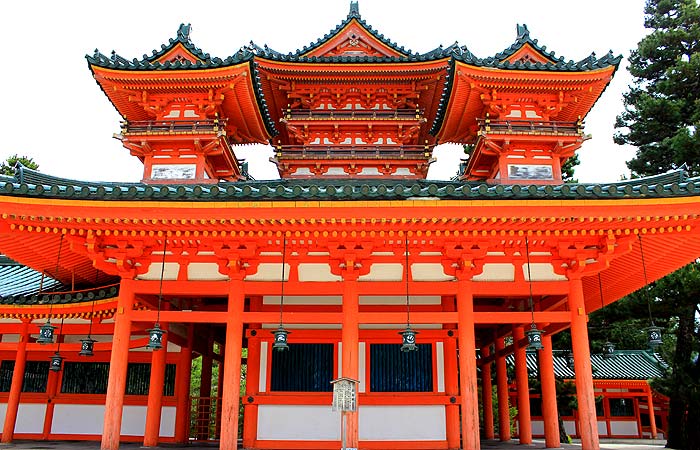
The bright vermillion 24.4 metres high torii gate indicates that the Heian Shrine is straight ahead. Walk through the Otenmon Gate (main gate) and discover the stunning Heian Shrine. Heian is the former name of Kyoto and the shrine was built in 1895 to celebrate 1100 years of becoming the capital of Japan. The Heian Garden has separate entry and its 30,000 square metres are divided into north, south, east and west. Stroll along the winding paths. Sit under the tortoise shell shaped bridge and gaze out across the pond. Birds chirp sweetly as they flutter over the weeping cherry blossom trees.

On the foothills of Higashiyama mountains and the outskirts of Kyoto is Nanzenji Temple, one of the most important Zen temples in Japan. Situated in a tranquil setting stands a massive two-storey Sanmon Gate, reconstructed in 1628. The imposing solid wooden structure is impressive and offers great views of the scenic surroundings. A path leads to Nanzenji Temple and the well preserved red brick Suirokaku Aqueduct built in 1889.
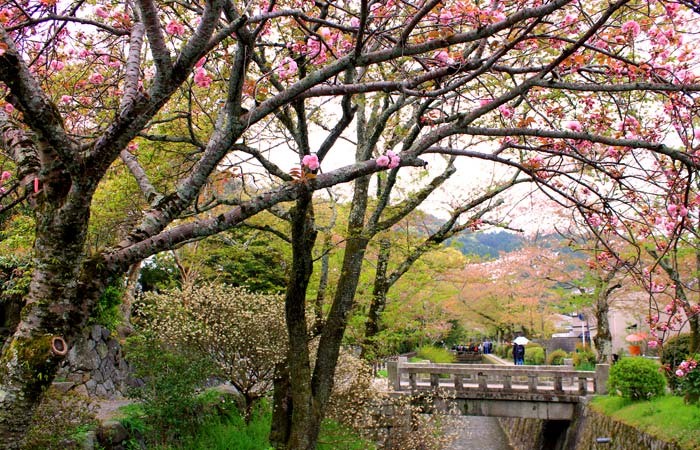
The tree lined path along the Shishigatani Canal stretches from Nanzenji to Ginkakuji Temple (Silver Pavilion), approximately 2 km. It is named after a philosopher, who took contemplative walks along the path to Kyoto University. Path of Philosophy is a favourite cherry blossom spot. Buses run parallel to the path, providing a short cut to Ginkakuji Temple.

Down a narrow path, bordered by tall hedges of sweetly scented camellia flowers are the Zen temple grounds. Soak up the perfectly landscaped gardens. From the Main Hall are outstretched dry gardens fashioning geometric sand sculptures and raked stripe sand designs. Walk up the moss-covered Tsukimachiyama Hill to the observation point for great views. Finally, head down the path till the Silver Pavilion comes into sight. Surprisingly, the Silver Pavilion is not silver. The shogun, Yoshimasa wanted his pavilion to be covered in silver like the gold gilded Kinkakuji Temple (Golden Pavilion) but a war prevented his wish to be fulfilled.
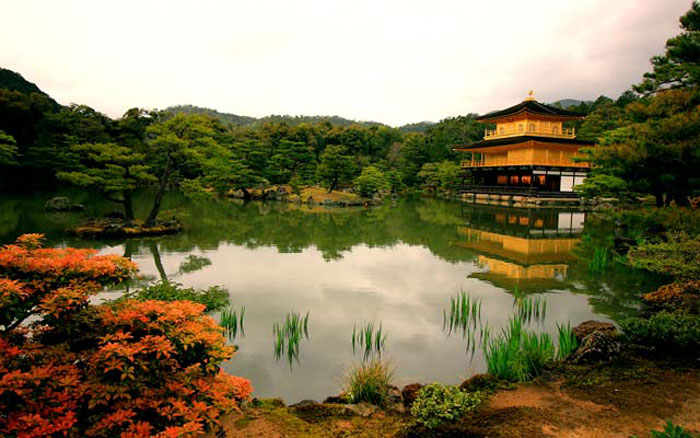
The Golden Temple’s reflection shimmers against the still waters of the Kyoko-chi Pond. Gold foil on lacquer covers the top two floors and a phoenix sculpture perches on the roof. Kinkakuji Temple is one of Kyoto’s iconic images and a UNESCO World Cultural Heritage Site. It is a Buddhist hall containing Buddhist relics. Tea houses and garden, listed as a Special Place of Scenic Beauty, complement the picturesque surroundings.

As crowds fade in the distance, the sound of rustling leaves and swaying bamboo becomes heightened. Gleaming light from above illuminates the stunning landscape, intensifying the vision of vivid greens. The tall bamboo shoots rise from the ground, reaching towards the sky. A sense of complete serenity and natural wonder fills the atmosphere. The experience exceeds expectations. Also, explore the numerous temples in the surrounding Arashiyama area.

The Miyako Odori Show is performed by Geisha, known as Geiko in Kyoto and the apprentices, Maiko. It is a glimpse into Japan’s Geisha culture and only occurs during April. First, the Geiko tea ceremony, included in the ¥4800 ticket, is performed on stage. Each visitor is given a sweet accompanied by matcha tea. Plates are gifted to everyone. In the main theatre the show begins. No photos of the performance are allowed. Musicians play their instruments and sing as dancers gracefully glide on to the main stage. Eight perfectly choreographed scenes with beautifully painted backdrops take the audience on a journey through the four seasons.
miyako-odori.jp/english/

Centrally located at the busy Shijo Dori and Higashioji Dori junction stands the bright vermillion, green and white gate of Yasaka Shrine. The shrine was built around 876 to appease the gods during the plague. The month long Gion Festival, started for the same reason and is held here from 1 July. Yasaka Shrine is set in pleasant park grounds with several other shrines and buildings.
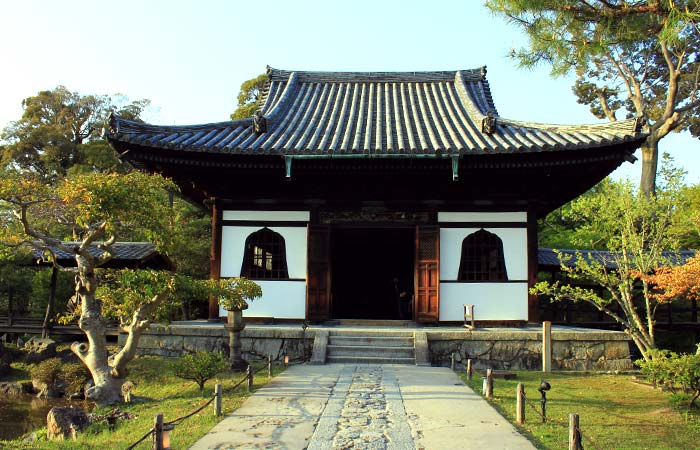
Climb the stone stairway to Kodaiji Temple and explore numerous hidden gems. Inside the temple garden is a turtle shaped island and south of the pond are stones in the form of a crane. Discover the exquisitely decorated ceiling in Kaisan-do (Founder’s Hall). Reclining Dragon Corridor with its scale like roof tiles, stretches from Kaisan-do to Otama-ya. Otama-ya is a sanctuary containing deities and lacquer art. Find quaint teahouses along the trail. Moon Viewing Pavilion is the perfect spot to observe the moon’s reflection on the pond. Walk through the bamboo grove. An opening reveals the Bodhisattva statue at the neighbouring Ryozen Kannon. Kodaiji Temple is like a secret garden. Treasures from Kodaiji and other temples are in the Kodaiji Sho Museum.
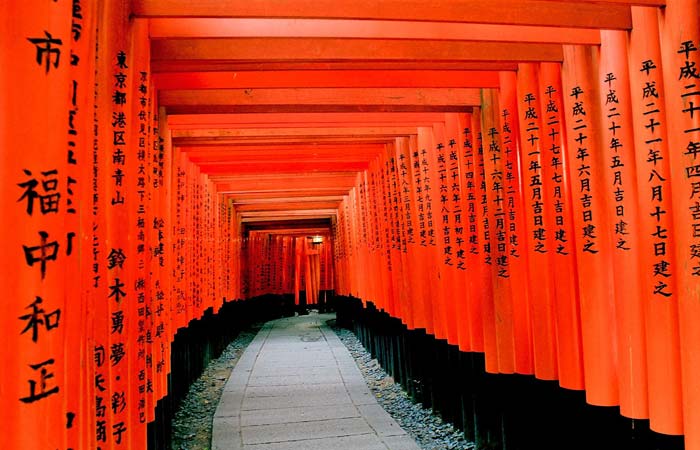
Late afternoon, shortly before sunset, excitement builds as you enter the grand entrance through the main torii gate. Intricately crafted shrines sit at the base of the Inari Mountain. Behind the shrines and around the corner, the most striking scene appears. The first of many torii gates awaits your presence. Such a simple structure but when multiplied by thousands it becomes a breathtaking masterpiece of vermillion tunnels. Crowds disperse the steeper the climb. Uphill facing toriis are plain but on the back discover beautifully scrolled scriptures. The long trail is broken up by small stone shrines guarded by statues of foxes and guardians. Relax at these serene spots of contemplation. After an hour’s trek, the view from the Yotsutsuji Intersection during sunset is rewarding. As you return downhill, shadows appear as the sun fades away and lamps are lit. An atmosphere so magical, as light and shadow weave their way through the sea of vermillion toriis.

The sacred Kiyomizudera Temple is more than 1200 years old and one of the most dramatic UNESCO World Heritage Sites in Japan. It is nestled within lush green forest, half way up Mount Otowa in Higashiyama and stands on pillars, 13 metres high. The Kannon deity is enshrined in the Main Hall. Hit the copper drum and feel it reverberate through your body. Protruding from the Main Hall is the wide Kiyomizu Stage with gorgeous views of Kyoto. Kiyomizu means ‘pure water’. Head down the stone stairs or slope towards the pond. People gather here to catch the pure water from the Otowa Waterfall which flows down three channels into a pond. Catch the water in a long handled cup and make a wish.
kiyomizudera.or.jp/en/
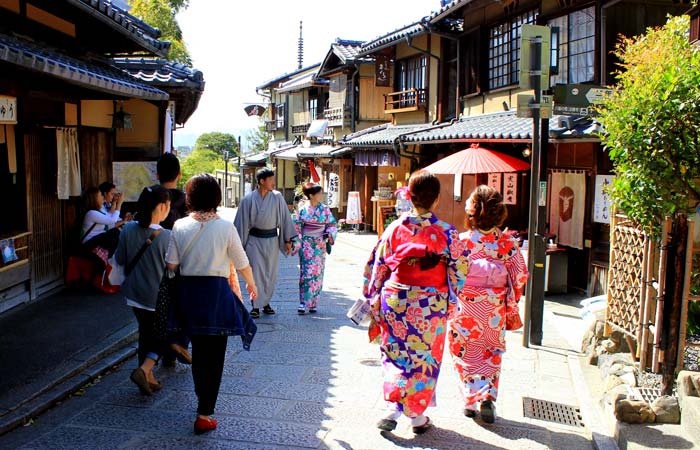
Enjoy a gentle stroll through the streets of Kyoto. Walk downhill from Kiyomizudera towards Ishibekoji and Sannenzaka Slope. Get a real sense of ancient Japan with traditional wooden shops and restaurants decorated with parasol umbrellas. Continue through the maze of narrow lanes and lose yourself in a hidden world away from the crowds.
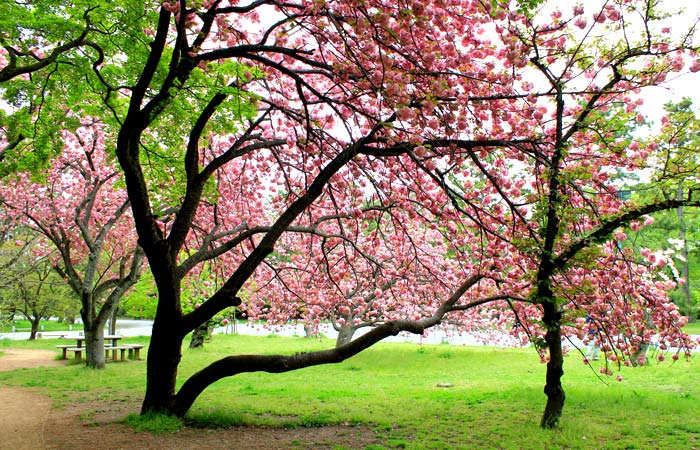
The walled garden is a peaceful green haven in the centre of Kyoto. Cherry blossom trees, vast gardens, children’s park, tennis courts and a large cafe are some of the facilities in the Kyoto Gyoen National Garden. At the far end are the Imperial Household Agency, Kyoto and Sento Imperial Palaces.
env.go.jp/garden/kyotogyoen/english/
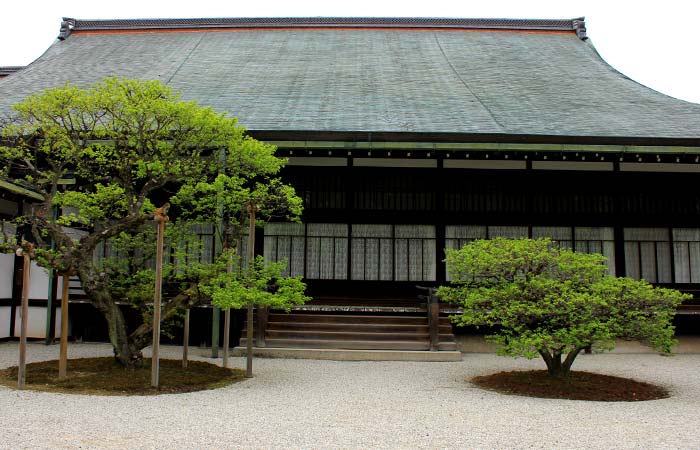
Take a peek on the other side of the palace walls. Surprisingly, not many of the original structures exist. The Sento Imperial Palace was the residence of retired Emperors. It was not rebuilt after the great fire in 1854 as there was no retired Emperor at the time. Instead, in 1867 the Kyoto Omiya Imperial Palace was built for the Empress Dowager but now all that remains is the main structure, the Otsunegoten. The Royal Family stay here during their visits. The gardens are beautifully manicured with bridges, ponds, stone lanterns, trees and teahouses. Check out the Yatsuhashi Bridge covered by stunning wisteria flowers. On the shoreline of the South Pond there are 111,000 flat oval stones all of similar shape and size. They are called Sho Stones as each stone was transported for a sho (half a gallon) of rice.
Book online or at least 20 min before at Imperial Household Agency. Take your passport. Advance booking sankan.kunaicho.go.jp/english/guide/sento.html
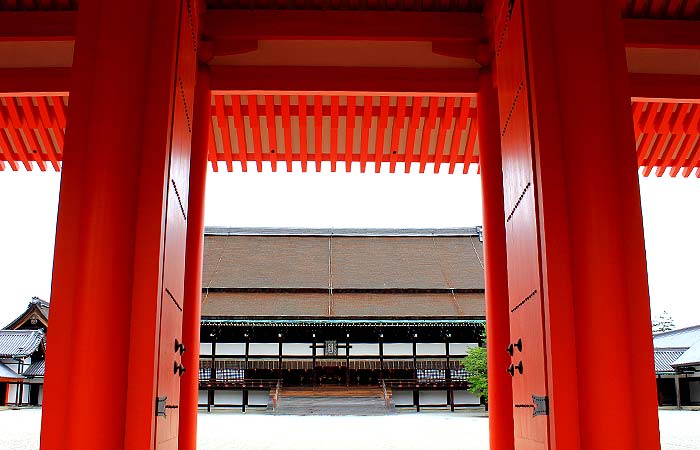
Kyoto Imperial Palace was rebuilt in 1855. The most important building in the grounds is the Shishinden where enthronement ceremonies were held. Inside, view the Imperial Thrones for the Emperor and Empress. The Otsunegoten was the main residence of the Emperor until the capital was moved to Tokyo in 1869. The interiors of the Shodaibunoma, waiting quarters for courtiers on official visits, are intriguing. Designs convey a hierarchical system. The tatami mats are edged with different colours depending on the visitor’s rank. The beautifully painted sliding doors in each room symbolise the visitor’s importance too. The tiger room was most favourable, then the crane and lastly the cherry room. The tours are excellent and give a detailed insight into the Royal Family’s life in historical Japan.
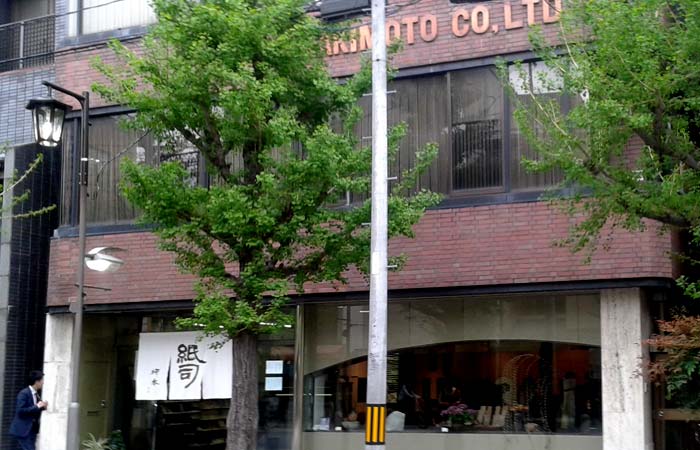
This shopping destination stretches from South to North Kyoto. The range of shops is diverse, from the fashionable shopping arcade to the traditional antique shops. Art galleries, bookshops, arts and crafts shops in wooden buildings co-exist with the retail brand names on Teramachi Street. Many are closed on Mondays. Personal favourite is Kamiji Kakimoto, a unique paper shop; open 9am–6pm daily. The variety and quality of paper is outstanding. Leaf through layers of delicate handmade washi paper.
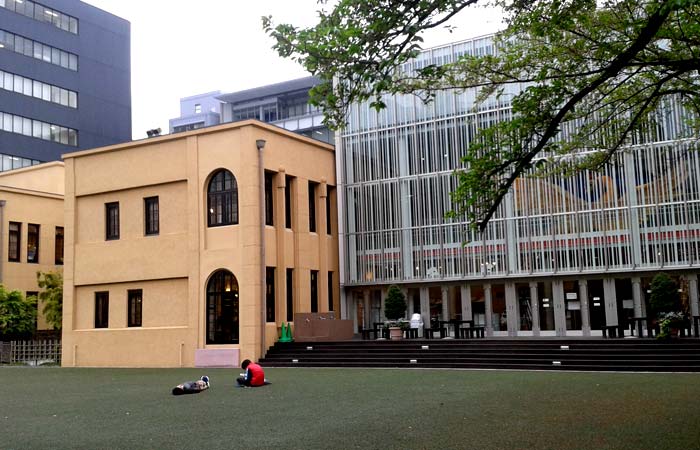
The Kyoto International Manga Museum has the largest collection of manga materials in the world. ‘Wall of Manga’ is spread across three floors. 50,000 manga publications fill the shelves and can be read on site. Many creative events and exhibitions occur at the museum. On weekends and public holidays professional manga artists show how they draw manga characters in the Manga Studio.
kyotomm.jp/english/